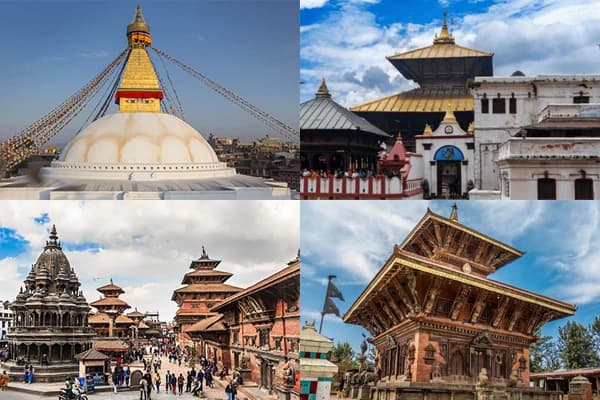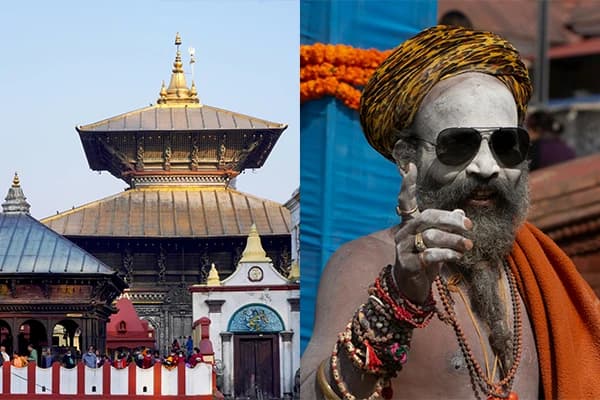Overview of the Mardi Himal Trek
The Mardi Himal trek is one of the beginner-friendlytreks that takes you to the base camp of the Mardi Himal throughdiverselandscapes such as rhododendron forests, grasslands, and rugged mountain peaks.
During the journey, you will see the views of the snow-capped peaks like AnnapurnaI, AnnapurnaSouth, Machhapuchhre, and GangapurnaHimal.
The trek is considered a moderate trek. Beginners and people with reasonable fitness levels can go for the trek. Some stamina is still needed because there are steep ascents, descents, and stone steps that demandphysicalendurance.
The trek itinerary begins in Kande and takes you through the various villages and camps, including Pothana, Forest Camp, Low Camp, and High Camp, before reaching Mardi Himal Base Camp. This trail offers an exploration of the culturalexperiencesinthevillage with serene settings.
The total distance covered is approximately 57kilometersroundtrip. And the highest point of the trek is the Mardi Himal base camp, which is at an altitude of approximately 4500 meters.
The trek can be completed within5-7days depending on preferences and fitness level. Overall, the trek is challenging along with the rewarding.
Advantages of Off-Season Trekking to Mardi Himal
- Fewer and peaceful trails
Only a few people choose the off-season as the trekking season. Which is good for those who want to enjoy the quiet trekking experiences with their friends or partners. It will allow you to fully immerse yourself in nature. It is one of the best advantages of the Mardi Himal off-season trekking.
Trekking in the offseason can be cost-effective too. As there are fewer trekkers and demands, you can get discounts on the accommodations, food, and other services and items. The same items, services, or facilities may cost more in the peak trekking seasons, like spring and autumn seasons.
While not guaranteed, after rainfall in monsoon and snowfall in winter, the views become better and more beautiful. In the monsoon, the rainfall washes all the dust from the flora, and the views after the rain become greenery.
Similarly, the winter season has snowfalls, which makes the mountains more beautiful. It can only be observed in the winter season and is unique to the peak trekking seasons.
- Enhanced wildlife encounters
In the offseason, you get a chance to encounter the wildlife roaming in their natural habitat. You may not get the same chance as wildlife rarely appears when there are so many people. While some of the common wildlife, like langur monkeys and various bird species, may still appear in the other seasons too.
- Authentic cultural interaction
When there are fewer trekkers during the offseason, you will get more time to interact with the locals, learn their culture firsthand, and enjoy authentic Nepali hospitality in a more relaxed setting. The fewer the crowd, the more opportunities you will get to connect with the local communities of diverse cultures.
For those who want more adventures and challenges, the Mardi Himal offseason trek is the best option. It gives you unique challenges like snowy trails in winter or muddy paths in monsoon, which makes your journey more thrilling and exciting.
- Distinctive Photographic Opportunities
The off-season means a unique environment and scenery. Thus creating more distinctive photographic opportunities. The pristine white snow in winter and vibrant greenery during the monsoon make the raw photo more attractive naturally.
Challenges to Consider during Mardi Himal Offseason Trekking
Other than the regular seasons, the off-seasons have the most unique and unpredictable weather conditions. In the monsoon season, there may be frequent rain the whole day, disrupting the regular itinerary plans.
In the winter season, the weather becomes cold, with frequent snowfall and reduced visibility. The vegetations are covered with snow, especially in the higher elevation places like High Camp (3,600m) and Mardi Himal Base Camp (4,500m).
- Trail conditions and navigation issues
The trails become slippery whether it is rain in the monsoon or snow in the winter. The slippery trails are risky to walk on. The heavy rainfalls during the monsoon can trigger landslides, blocking the trails and disrupting the planned paths.
The weak ground covered with the snow during winter may be found on the trails. The steps on those weak grounds may be life-threatening.
- Altitude sickness issues and health risks
Off-season treks to Mardi Himal come with altitude sickness issues and health risks. Reaching up to the Mardi Himal base camp at an altitude level of 4500 meters can be challenging, especially with the additional off-season challenges. Conditions like cold weather and physical exertion can lead to hypothermia and dehydration if not managed properly.
- Remoteness and limited resources
The offseason trek can be interesting until you have to face the shortage of accommodation options along with the existing offseason issues. There are fewer amenities available in the teahouse. The medical help is also limited in the remote areas. If not planned or booked previously, there may be issues in finding one at the right time.
- Wildlife and navigation aids
The area is home to several wildlife, some of which can be dangerous. Furthermore, the monsoon season brings an increase in mosquitoes that causes diseases like malaria and dengue fever.
Mardi Himal Offseason Trekking itinerary
- Day 1: Arrival in Pokhara
Altitude: 827 meters (2,713 feet)
Distance: Travel time from Kathmandu to Pokhara (6-8 hours by bus or 25-30 minutes by flight)
- Day 2: Drive to Kande and Trek to Australian Camp
Altitude: Kande (1,780 meters / 5,840 feet), Australian Camp (2,060 meters / 6,760 feet)
Distance: Drive from Pokhara to Kande (about 30 minutes), then trek to Australian Camp (2-3 hours)
- Day 3: Australian Camp to Forest Camp
Altitude: Forest Camp (2,520 meters / 8,268 feet)
Distance: 5-6 hours (10 km)
- Day 4: Forest Camp to Low Camp
Altitude: Low Camp (3,150 meters / 10,335 feet)
Distance: 4-5 hours (6 km)
- Day 5: Low Camp to High Camp
Altitude: High Camp (3,700 meters / 12,139 feet)
Distance: 4-5 hours (5 km)
- Day 6: High Camp to Mardi Himal Base Camp and Return to Low Camp
Altitude: Mardi Himal Base Camp (4,500 meters / 14,764 feet)
Distance: 6-7 hours round trip (12 km)
- Day 7: Low Camp to Forest Camp and Trek to Kande, then Drive Back to Pokhara
Altitude: Forest Camp (2,520 meters / 8,268 feet), Kande (1,780 meters / 5,840 feet), Pokhara (827 meters / 2,713 feet)
Distance: 5-6 hours total (12 km).
So, is it worth it?
As you know now, the off-season trekking is full of challenges along with the opportunities too. it is hard to tell that the trek is worth for everyone as everyone has different perspectives, preferences, capicities, and trekking experience. But, in my opinion, it is totally worth it. Because the trek offers the solitude and peaceful trekking in the Himalayan region.
In short, the trekkers who are seeking deep solitude can make the most out of the trek, as the trek offers less crowded, more tranquil, and more personal experiences. The private explorations of the remote landscapes, enjoying the breathtaking views, challenging weather conditions, and so on, feel different than in the regular seasons.
In addition, the trekkers who are seeking the extra challenges, like unpredictable weather conditions, icy or slippery trails, altitude issues, and more in the Mardi trek, then the offseasons are worth going. These challenges are at their extreme during the offseason.
However, if the trekker has existing health issues or does not want to face the extra off-season challenges, then it is better to stay away from it. Overall, it highly depends on the trekker’s ability and planning whether the trek will be worthwhile or not.
If you have planned to go for the offseason trek to mardi base camp, then the content below is just for you.
Accommodation Information and Planning for Offseason trekking
The planning of the accommodations during the Mardi Himal offseason trekking can be overwhelming when not considered carefully. It is because during the offseason, most of the accommodations are closed, and amenities may also be limited.
In the lower altitude places like Kande and forest camp, you may find the guesthouses and lodges available. Finding accommodations is not an issue there. The amenities and accommodations are also good even in the offseason.
However, as you ascend above forest camp and reach places like low camp and high camp, you may find the limited accommodations along with basic amenities. The rooms are shared, and amenities like hot showers and electricity may also not be available.
As there is no accommodation in the Mardi Himal Base Camp, you should plan your trek itinerary accordingly.
In the accommodation planning, contacting teahouses ahead of time to confirm availability and making reservations are necessary. You can gather the contact information from the online resources and make sure that the teahouse is open during your trekking dates.
Gears and Equipment for Mardi trekking
The challenges during the off-season trekking to the Mardi Himal base camp are easy to face when equipped with the proper gear and equipment. So, careful planning while choosing the gears is needed. Below are some of the recommended gears that will help you during the offseason trek.
- Clothing like hiking boots/shoes, hiking pants, t-shirts and long-sleeve shirts, fleece/insulated jackets, waterproof/windproof jackets, thermal base layers, warm hats and gloves, socks, and so on.
- Equipment like a 30-40 liter backpack, sleeping bag, trekking poles, headlamp/flashlight, water bottles or a hydration bladder, reusable water bottle/water purification tablets, and more.
- Personal care and hygiene like toothbrush, toothpaste, travel-size shampoo, conditioner, soap, sunscreen, lip balm, insect repellent, hand sanitizer, and wet wipes.
- First aid kit containing Diamox, pain relief medications, antiseptic ointment, bandages, and personal medications.
- Miscellaneous activities like Nepali rupees and copies of essential documents like your passport and trek permits, camera, power bank, snacks, and energy bars.
Physical Conditioning and Mental Preparation for the Challenges
To be able to face the challenges of the Mardi Himal offseason trekking, physical conditioning and mental preparations are important.
During the trek, various challenges like steep ascents, descents, Mardi Himal offseason Trekking comes along with the seasonal challenges.
So, you need to do the exercises and activities like running, cycling, and swimming for cardiovascular health; squats, lunges, push-ups, and core workouts for strength; long walks or hikes on uneven terrain for endurance; and yoga or stretching exercises for flexibility.
The physical conditioning also helps in mental preparations. However, the other considerations, like researching the trek thoroughly, setting realistic expectations, visualizing success, mentally preparing for challenges like unpredictable weather or limited amenities, and so on, can help in mental readiness.
Permits required for the offseason Trekking
For the Mardi Himal off-season trekking, you will need two types of permits. You can obtain both permits from the Nepal tourism board offices in Kathmandu or Pokhara.
- Annapurna Conservation Area Permit (ACAP)
The ACAP permit is most essential for the Mardi trekking even in the offseason. The cost of the permit for foreign nationals is approximately NPR 2,000 (about $15).
You will need the documents like passport details and a copy, two recent passport-sized photos, a trekking itinerary, travel insurance details, and a Nepal visa.
- Trekkers' Information Management System (TIMS) Card
The TIMS card is the second most essential for the off-season trek to Mardi. This is mandatory for the trekkers going for the Mardi trek. The cost for individual trekkers is NPR 1,000 (approximately $8).
The documents needed for the TIMS card are a photocopy of the information page of your passport, two recent passport-sized photos, a detailed plan of your trek, travel insurance details, a valid Nepalese visa, and basic personal details and emergency contact information.
Tips for Mardi Himal Off-Season Trekking
- Engage in physical training and exercises like hiking, cycling, or swimming.
- Research the general weather conditions of the trekking duration before going for the treks.
- Obtain the necessary permits, like the Annapurna Conservation Area Permit (ACAP) and the Trekkers’ Information Management System (TIMS) card, before starting.
- Use the detailed maps and GPS apps like Maps.me or Gaia GPS to stay on the track.
- Use poles for balance on the slippery trails, especially when going for trekking in the monsoon.
- Plan your accommodations in advance and make sure that it is open during your travel days.
- Be flexible with the itinerary changes due to the sudden weather changes and potential delays.
- Carry quick-drying clothing during the monsoon to manage wet conditions.
- Prioritize your safety when traveling during the offseason in remote areas.
- Hire a local guide and porter to guide you through the challenging conditions.
- Pack warm layers, as even the monsoon can be cold in the higher altitudes.
Conclusion
The Mardi Himal offseason trekking presents unique challenges along with distinct advantages like solitude and tranquility, snow-covered scenery in winter, lush greenery in monsoon, stunning views, and so on. These unique aspects of the offseason make it stand out among the peak trekking seasons.





